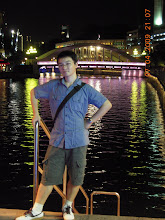After two lectures on ES2007S, I almost adapted to this course. The whole class structure is quite clear and the workload is onerous too. Although there is no final exam, the course is evaluated in six parts:
- Peer Teaching (10%)
- Application Letter (10%)
- Proposal (10%)
- Proposal Discussion (10%)
- Oral Presentation (20%)
- Oral Interaction (20%)
- E-portfolio (20%)
Thus, compared to normal modules, which has a final week to catch up, this one requires continues effort throughout the whole semester. As for me, I think it is necessary as this is communication course where you need to use and improve all the time. Despite of the annoying assessment, this course is really helpful and fun. In the last two lectures, or tutorials or maybe call it as friends chatting and discussion, we were assigned to various groups to discuss on those fundamental topics on communication, like the communication models, channels, listening skills, story telling as well as questioning. As for me, I never consciously thought about communication models or active listening or any communication tips before, while in the tutorial room, I had to observe all those mentioned verbal and nonverbal communication as well as the related skills. By practicing and summarizing those conversations, I really learnt how to listen and reflect actively.
In my point of view, this course is divided into three parts: fundamental of communications; written communication and project communication. In the first part, we are to explore those ignored communication details and strategies on normal face to face communication basis. In this stage, the more study related tips are given and we shall learn and try to apply them into practices. The second stage is more focused on the emails, books, and letters where people transfer their ideas without seen each other. The third stage is the mixture of the previous two where we are supposed to get together to form a small project group to discuss and communicate effectively among ourselves, in addition to that, we also need to express our ideas in black and white where other people can read and decode.
If asked about the reason why I choose this course, I may answer with those common answers by everyone in the class as to build up communication skills, to know more friends or to have fun and fulfill the university education requirements. What is unique to me may be the fact that I am already year four and I have to write my FYP projects and I need to collaborate with my peers, my senior PHDs, my supervisor and lab coordinators. Thus, I need to know more specific effective communication tips to help me build a more effective study and work environments as soon as possible. Besides that I will have to write a lot of those CVs, cover letters and proposals for my future job application. It is kind of more practical for me before I step into a professional engineer.
